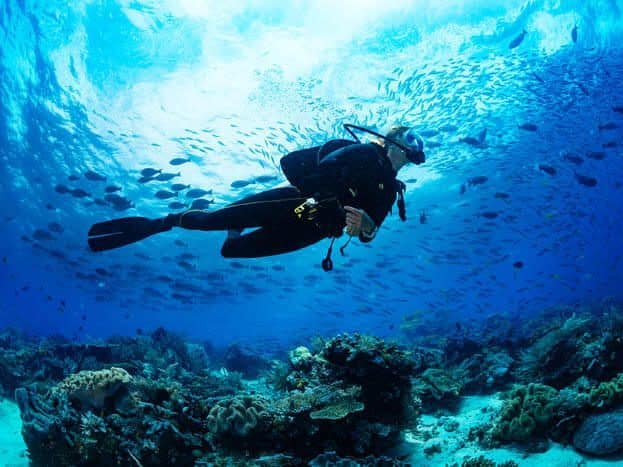Plastic water bottles, a long-known enemy of our Earth, are finding their way into human bodies in huge quantities—well, pieces of them are. A study published this week shows just how much plastic we drink with bottled water: Researchers from Columbia University and Rutgers have found at least 240,000 plastic particles in the average liter of bottled water, a major health concern.
Most of the plastic particles found by the researchers were extremely small nanoplastics, which have a diameter of less than one micrometer—making them invisible to the naked eye. Nanoplastics have been historically challenging to study due to their extremely small size, but as technology has improved, scientists are now finding them almost everywhere—including in the environment, plants, animals, beverages, foods, and our human bodies.
We know at this point that our skin is constantly shedding. And this is what these plastic items are doing — they’re just constantly shedding.
— Dr. Sam Mason, professor and director of sustainability at Penn State Behrend, said to The Washington Post
Tiny Plastics Present Big Dangers

Plastics do not benignly break down like natural substances. Instead, they break apart into infinitely smaller pieces that remain plastic. This process can be sped up when plastics are exposed to water, such as in the ocean or in a water bottle, or when plastic is heated, like when lawn furniture is left in the sun or a plastic container of food is microwaved. In addition to creating nanoplastics, plastic items also shed slightly larger and more visible microplastics. And unfortunately these particles are becoming virtually impossible to avoid. Another recent study shows that commonly consumed plant and animal proteins are contaminated with microplastics.
Due to their small size, nanoplastics and microplastics accumulate in and travel through our environment, and this means these tiny plastic pieces are increasingly entering bodies. We are especially exposed to microplastics and nanoplastics when we drink, eat, and breathe. Over the past several years, scientists have detected the presence of tiny plastic particles all throughout people’s bodies, including in our hearts, bloodstreams, veins, lungs, placentas, feces, testes/semen, breast milk, and brains, with more worrying research now on the way. Observations of wild animals in nature show us that interactions with plastic particles can be lethal—especially nanoplastics which are so small they can travel from animals’ bloodstreams into their brains, other organs and tissues, and living cells. Children and pregnant people are especially vulnerable to the effects of plastic.
While the full range of health effects of nanoplastics and microplastics in our bodies is not yet fully understood, what experts do know is already very concerning. Like all plastics, microplastics and nanoplastics are known to contain any mix of additive chemicals. More than 16,000 such chemicals have been counted in plastics, and none have been classified as “safe.” At least 25% are already officially classified as hazardous. A few concerning plastic chemicals include hormone-disrupting and cancer-causing phthalates, PFAS, and bisphenols; asbestos and toxic heavy metals such as lead and arsenic; and much more. Additionally, microplastics can absorb and accumulate toxic chemicals in the environment, which leach into living bodies, waters, soils, and plants.
Take Action
Tiny plastic particles are also present in tap water, due to the use of plastic pipes, water storage and treatment equipment, and environmental pollution—but in far smaller quantities. Certain filters can help remove plastic particles from tap water. Drinking from plastic-free ceramic, glass, or stainless steel reusable water bottles can help drastically reduce your exposure to plastic particles. Further, when choosing foods, select the least processed options, such as loose fruits and vegetables which are usually less contaminated by plastic, and in general avoid food that is packaged in plastic—instead, look for foods in paper, banana leaves, or no packaging.
While it’s helpful and healthy to cut plastic out of your life to protect your health, we still need major systems change to stop this urgent global crisis. One major step we can take is to ban plastic water and beverage bottles, and all other plastic, from school lunchrooms to protect children’s health. Please tell the U.S. Department of Agriculture’s Food and Nutrition Service to eliminate the use of plastics as part of the National School Lunch Program.






